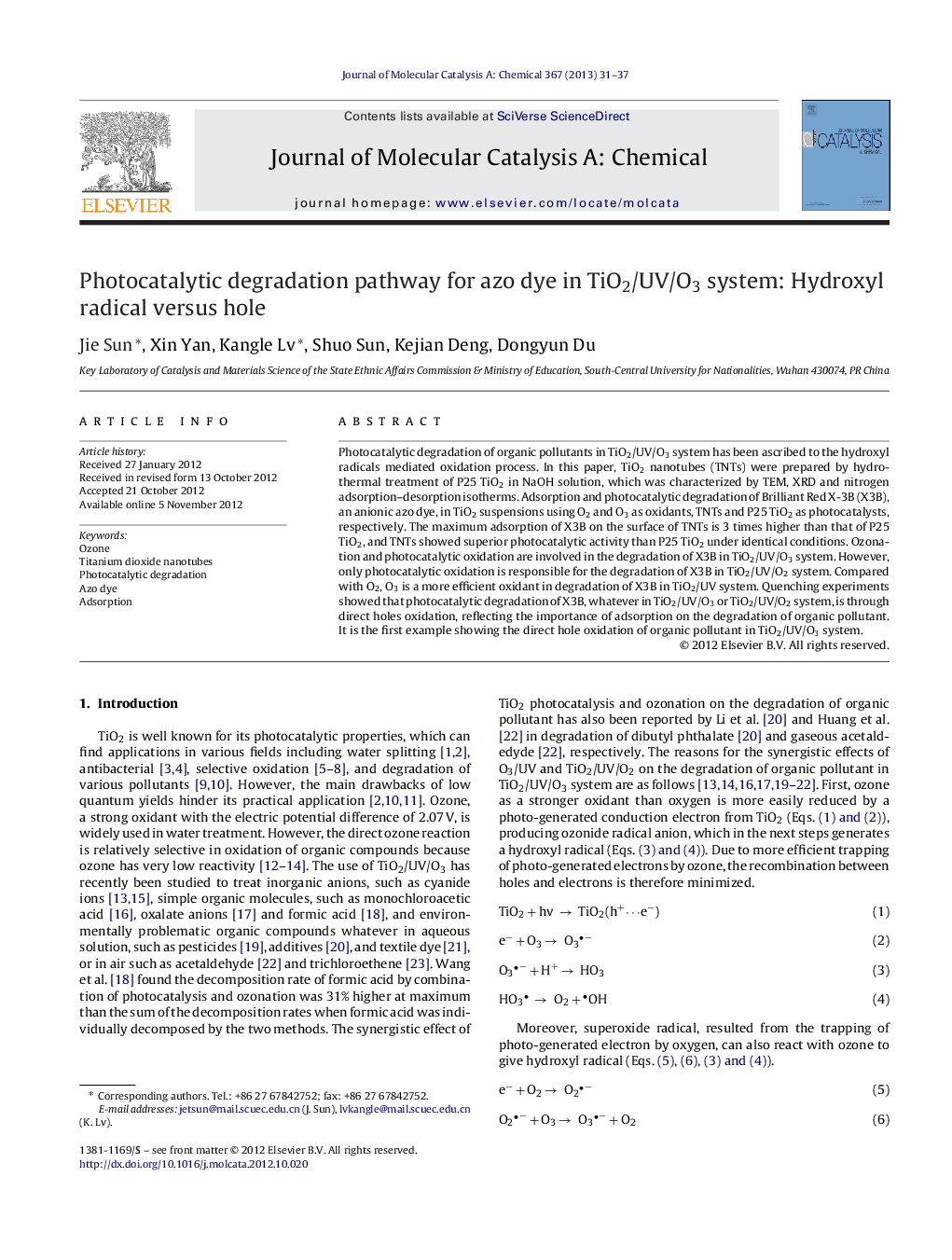| Article ID | Journal | Published Year | Pages | File Type |
|---|---|---|---|---|
| 65988 | Journal of Molecular Catalysis A: Chemical | 2013 | 7 Pages |
Photocatalytic degradation of organic pollutants in TiO2/UV/O3 system has been ascribed to the hydroxyl radicals mediated oxidation process. In this paper, TiO2 nanotubes (TNTs) were prepared by hydrothermal treatment of P25 TiO2 in NaOH solution, which was characterized by TEM, XRD and nitrogen adsorption–desorption isotherms. Adsorption and photocatalytic degradation of Brilliant Red X-3B (X3B), an anionic azo dye, in TiO2 suspensions using O2 and O3 as oxidants, TNTs and P25 TiO2 as photocatalysts, respectively. The maximum adsorption of X3B on the surface of TNTs is 3 times higher than that of P25 TiO2, and TNTs showed superior photocatalytic activity than P25 TiO2 under identical conditions. Ozonation and photocatalytic oxidation are involved in the degradation of X3B in TiO2/UV/O3 system. However, only photocatalytic oxidation is responsible for the degradation of X3B in TiO2/UV/O2 system. Compared with O2, O3 is a more efficient oxidant in degradation of X3B in TiO2/UV system. Quenching experiments showed that photocatalytic degradation of X3B, whatever in TiO2/UV/O3 or TiO2/UV/O2 system, is through direct holes oxidation, reflecting the importance of adsorption on the degradation of organic pollutant. It is the first example showing the direct hole oxidation of organic pollutant in TiO2/UV/O3 system.
Graphical abstractFigure optionsDownload full-size imageDownload high-quality image (116 K)Download as PowerPoint slideHighlights► The first example showing the direct hole oxidation of organic pollutant in TiO2/UV/O3 system. ► Adsorption is important on the degradation pathway of organic pollutant in TiO2. ► Ozonation and photocatalytic oxidation are involved in TiO2/UV/O3 system. ► Compared with P25 TiO2, TiO2 nanotubes showed higher photocatalytic activity.
